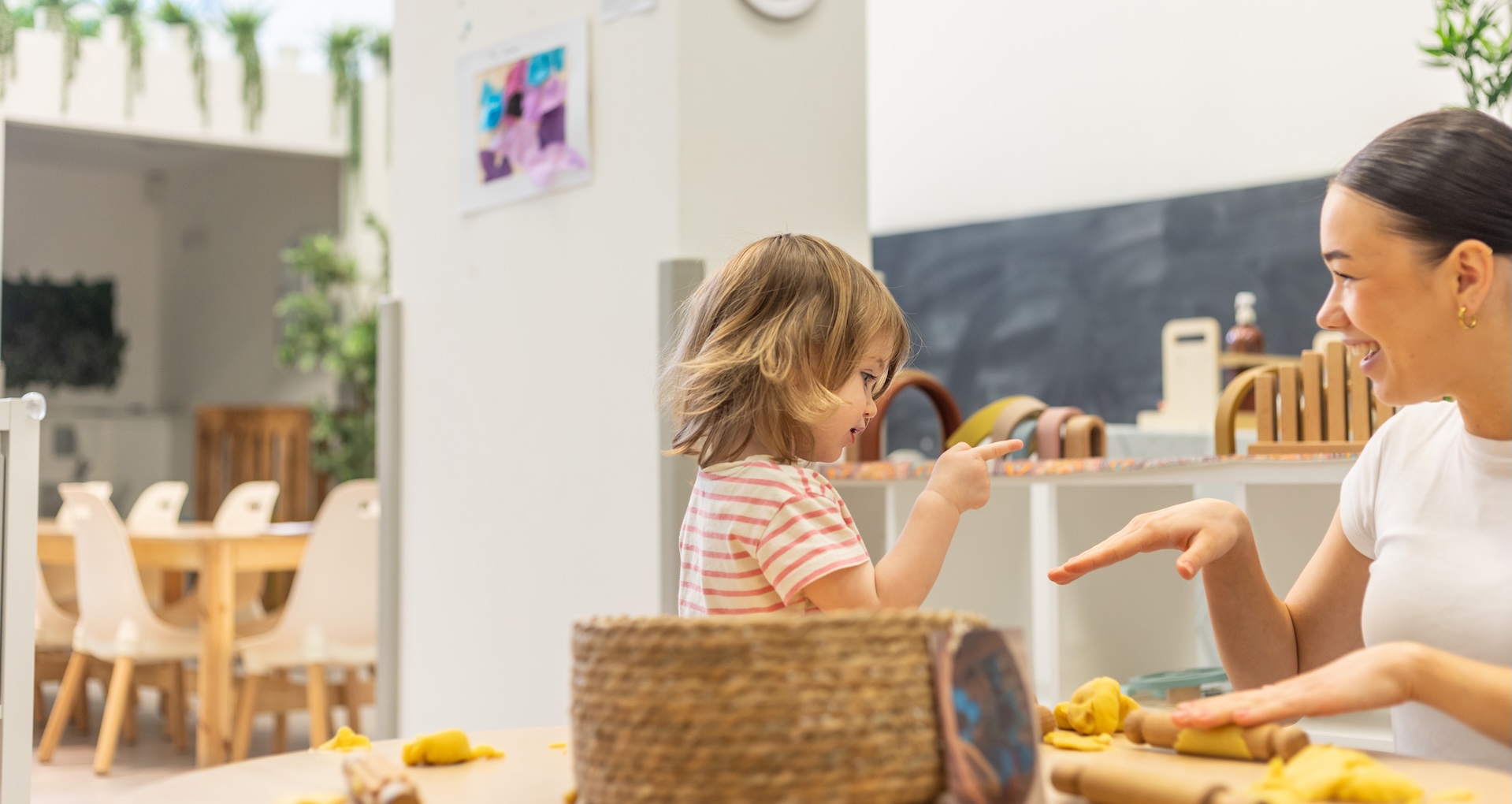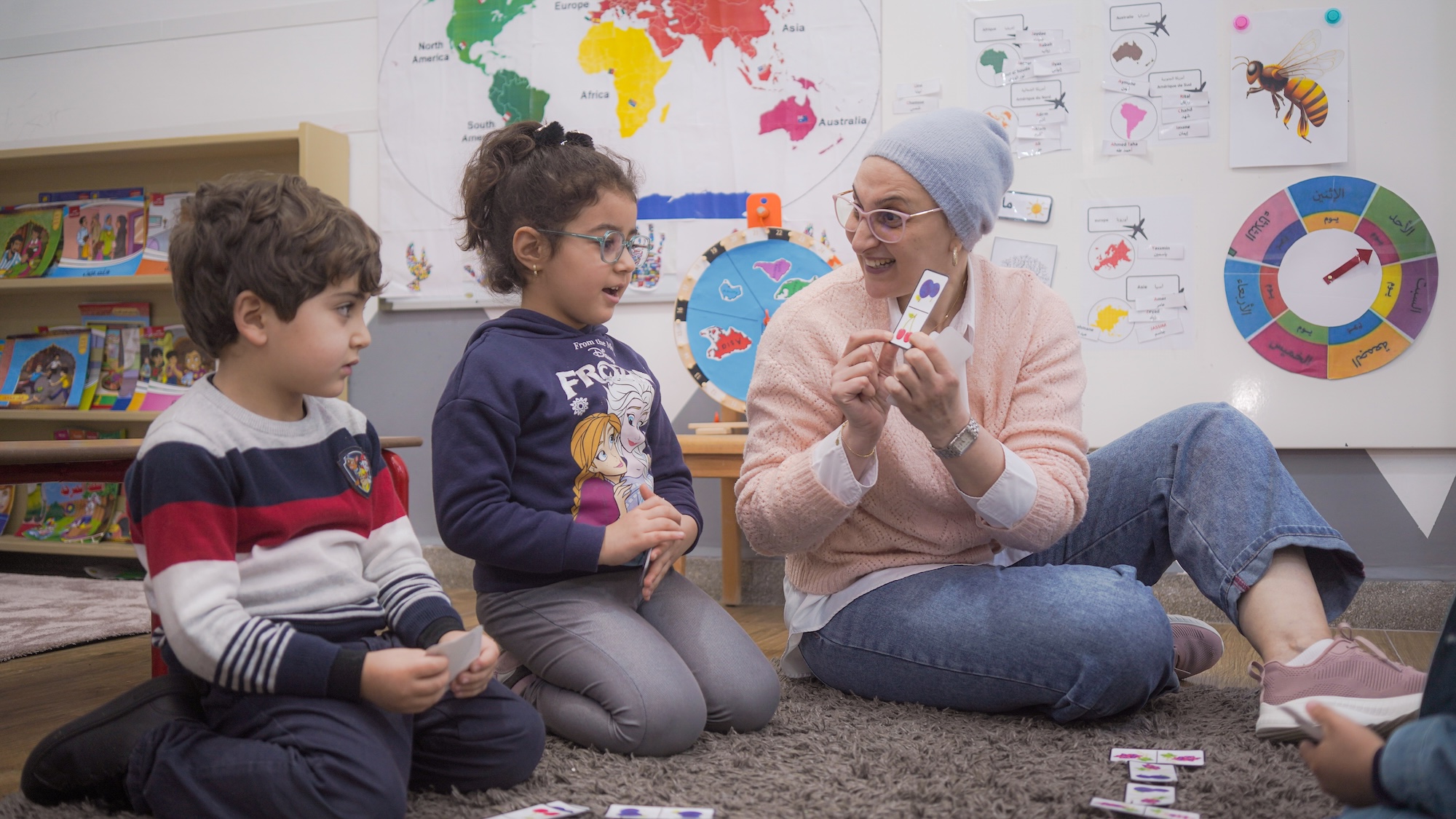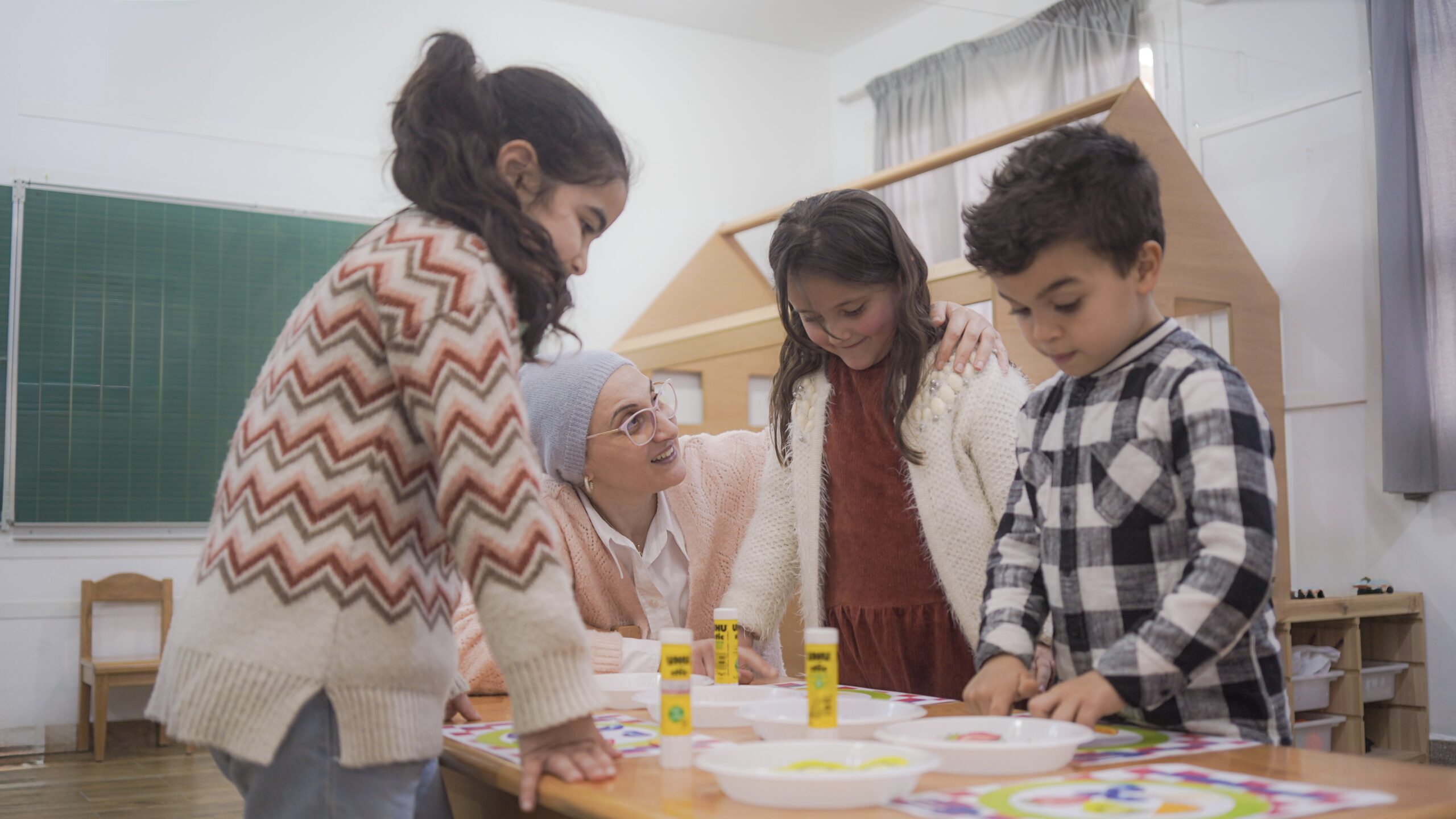In 2025, education is no longer just about exams, grades or academic performance. Schools across the globe are shifting to a more balanced, child-focused approach known as holistic education. This approach encourages children to grow not only intellectually, but also socially, emotionally, physically and ethically.
But what does holistic education really mean? And why are countries, from India to Finland, embracing it now?

What is holistic education?
Holistic education refers to an approach that nurtures the whole child, recognising that learning and development are deeply interconnected. In Finland’s Early Childhood Education and Care (ECE) system, this principle is foundational. Rather than focusing solely on cognitive skills, Finnish education supports:
- Individual growth and agency
- Learning through play and exploration
- Social and emotional development
- Cultural and environmental awareness
This child-centred model contrasts with traditional systems built around standardised testing and rote learning.
Key elements of holistic education in Finnish ECE
- Integrated learning
Rather than teaching subjects in isolation, learning areas are woven together. This is guided by the Finnish National Core Curriculum for ECE (2021), which outlines broad learning areas:
- Rich world of languages
- Diverse forms of expression (e.g. arts, music, drama)
- Me and our community
- Exploring and interacting with my environment (science, nature)
- I grow, move, and develop
- Child-centred approach
Learning is planned around the child’s interests and developmental level, and educators observe and respond to children’s needs in a flexible and dynamic way. Children are seen as active participants in their learning.
- Emphasis on Play
Play is considered the most natural and effective way for young children to learn. Through play, children:
- Explore emotions and relationships
- Develop problem-solving and cooperation skills
- Express creativity and imagination
- Values and wellbeing
Finnish ECE integrates values, such as empathy, fairness, equality, and respect for others and the environment, into everyday activities. Emotional well-being and mental health are treated as essential educational outcomes.
- Nature and environment
Nature plays a vital role in holistic education. Children often spend significant time outdoors, learning resilience, ecological thinking, and physical skills through direct interaction with natural environments.
Why are more countries adopting a holistic approach ?
Countries worldwide are rethinking what it means to educate children. Several factors are driving this global shift:
A changing world and future skills
Jobs of the future require creativity, adaptability and emotional intelligence. According to the World Economic Forum, 85% of jobs in 2030 don’t yet exist—meaning schools must prepare children with resilience, empathy, and teamwork, not just academic knowledge.
Rising concerns around mental health
Post-pandemic classrooms have seen a rise in anxiety, stress and disengagement. Holistic models help address these issues through mindfulness, emotional support and outdoor learning.
Influence of global best practices
Countries like Finland have long prioritised holistic development in education. Inspired by Finnish, Reggio Emilia and Scandinavian models, many others are following suit, including:
- India: Through the National Education Policy (2020), India now promotes play-based learning and emotional development in early years.
- China: Initiatives like Anji Play promote self-directed exploration over traditional academics.
- Brazil: The national curriculum emphasises integral development through play, arts and expression.
- South Africa: New ECD frameworks incorporate socio-emotional and physical development as learning goals.

Comparing traditional and holistic models
| Aspect | Traditional education | Holistic education |
| Focus | Academic achievement | Whole child development |
| Teaching style | Teacher-led | Child-centred, co-constructed |
| Learning style | Memorisation | Experiential, reflective, play-based |
| Assessment | Exams and grades | Portfolios, observations, narratives |
| Outcomes | Knowledge retention | Emotional resilience, life skills |
How holistic education works in the classroom
Create a nurturing and inclusive environment
Start by greeting each child warmly by name and making eye contact. This helps to create a sense of belonging and emotional safety. Value diversity by integrating the children’s languages, cultural backgrounds, and family traditions into daily routines and celebrations. Ensure that the physical space is safe, welcoming and engaging, with child-sized furniture, quiet areas for self-regulation, and open-ended materials that support curiosity and play.
Example: In FinlandWay®, we emphasize psychological, emotional and physical safeti in teacher training. Not only learnign spaces need to be safe, but the way teachers interact with children and other adults sets the tone.
Design integrated, play-based learning experiences
Use thematic or project-based learning that connects multiple developmental areas, such as language, mathematics, arts and science. Encourage children to explore topics they are naturally curious about, forming the basis of an emergent curriculum. Offer a variety of play types—including guided play, free play, and collaborative small group activities—to support all learners.
Example: FinlandWay® curriculum is play- and phenomenon-based. Children learn about different subject through expoloring phenomenon, such as water, life the city or space.
Help children recognise and name their emotions through visual aids, puppetry or storytelling. Model effective communication and conflict resolution by guiding children in expressing their needs and listening to others. Use daily circle time as a platform for discussing empathy, kindness, fairness, and other shared values.
Example: The so called “21st century skills” at are at the core of the FinlandWay® curriculum. For example, recognising and naming one’s feelings, working with peers, and communicating one’s needs are important 21st century skills.
Promote autonomy and child agency
Provide opportunities for children to make choices throughout the day, such as selecting activities or choosing roles during group work. Encourage them to set small personal goals for their projects and play. Involve them in planning routines or co-creating classroom rules, helping them take responsibility for their learning environment.
Example: The third cornerstone of FinlandWay® curriculum is participatory pedagogy. Inviting children to join plannign, decision making and documentation of their own learnign prepares them for active citizenship and taking initiative and responsibility of their own learnign and life.
Integrate nature and outdoor learning
Make outdoor experiences a regular part of the daily rhythm, regardless of weather, ensuring children are appropriately dressed. Treat the natural environment as an extension of the classroom, rich in sensory and exploratory opportunities. Provide meaningful, hands-on tasks that promote environmental awareness and stewardship.
Example: in FinlandWay®, we encourage schools to have outdoor spaces, when ever it’s possible. However, mud kitchen, water playareas and sand play can be organised indoors as well.
Use multiple forms of expression
Incorporate the arts, movement, and storytelling into weekly activities to foster creativity and expression. Allow children to share their ideas and feelings through drawing, role-play, music or construction. Celebrate each child’s unique learning style and preferred mode of expression.
Example: In FinlandWay®, we apply multiple ways of expression and encourage tecahers to involve children. For example, after a storytelling session, let children act out the story, draw it, build it with blocks, or retell it in their own words.
Engage with families and the community
Maintain regular two-way communication with families to strengthen the home-school connection. Invite family members to contribute skills, stories or songs from their background. Extend learning beyond the classroom through community visits or projects that link children with local people and places.
Example: In FinlandWay® we have our own parent app to create that link between the school and home. Teachers are trained to share updates about the children’s journey and make the learning visible.
Reflect and observe continuously
Use a variety of documentation strategies, such as photographs, written observations and portfolios, to assess each child’s growth and development holistically. Reflect often on how children interact with each other, their environment, and the learning materials. Use these insights to adjust your planning and better respond to children’s evolving needs and interests.
Example: Reflection and documentation are an important part of the FinlandWay® daily cycle. Teachers are guided to invite children to this process and share the highlights with the aprents through the FinlandWay® App.

Benefits of holistic education
Academic progress
Contrary to common fears, holistic approaches support and even enhance academic outcomes. Studies show that emotionally supported students perform better on standardised tests and are more motivated to learn.
Improved mental health and wellbeing
Children in holistic classrooms tend to be calmer, more focused, and less anxious. Activities like mindfulness, outdoor play and child-led routines reduce stress and behavioural issues.
Stronger social skills
Children learn how to listen, share, lead and resolve conflicts—skills essential for future workplaces and personal relationships.
Life-readiness, not just school-readiness
Holistic education equips children with emotional literacy, adaptability and intrinsic motivation—tools they carry for life.
Challenges schools face when adopting holistic education
Mindset and training
Educators trained in traditional models may struggle to adjust. Professional development is needed to support reflective, child-centred teaching.
Parental expectations
Some parents may resist less academic-looking models, fearing their children won’t be “prepared” for exams.
Balancing curriculum and flexibility
In many countries, schools still need to meet testing requirements. Balancing academic standards with child-centred goals is an ongoing challenge.
Resources and funding
Holistic education often requires more time, space, and staff. Implementing outdoor play areas or arts programmes can be limited by budget.
What parents and communities say
A growing number of families prefer schools that nurture emotional and social development alongside academics. A UK survey in 2024 found 79% of parents would choose a school prioritising well-being equally with academics.
Parents observe that children in holistic settings are more confident, open, and emotionally aware, bringing these benefits home.
Success stories around the world
| Country | Model/Example | Holistic features |
| Finland | National ECE Curriculum | Outdoor play, integrated learning, teacher autonomy |
| UK | School 21 (London) | Oracy, mindfulness, cross-disciplinary projects |
| USA | Blue School (New York) | Creativity, SEL, brain-based learning |
| India | NEP 2020 reforms | Play-based foundational learning, SEL integration |
| China | Anji Play | Self-directed, materials-rich play |
Q&A: Your questions answered
Is holistic education only for private schools?
No. While private schools often pioneer these models, public schools in Finland, Canada, Australia and India are increasingly adopting holistic methods—especially when supported by policy and community.
Can holistic learning be assessed?
Yes. Through portfolios, observations, self-reflection and developmental checklists, educators can track emotional, social and cognitive growth in meaningful ways.
Does it help with academic results?
Absolutely. Holistic education supports focus, motivation and mental balance—creating the ideal conditions for learning.
What role do parents play?
A major one. Open communication between home and school ensures consistent values and support. Parents reinforce emotional and social learning through conversations, routines and modelling.




